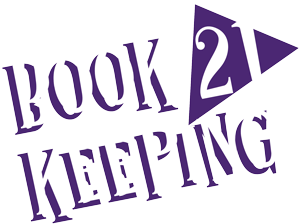Pretty much, everyone has heard the term “Outsourcing.” This term gets more and more popular every day. It means “obtain goods or services from an outside source.” Not so with “Compartmentalization.”
Compartmentalization, on the other hand, isn’t talked about as much (apart from the fact that it’s difficult to write and enunciate!). It means “to divide into categories or compartments.” In the corporate world, some people take it the wrong way and associate it with creating silos within an organization. CMS Wire states, “… silos describe the isolation that occurs when employees or entire departments within an organization do not want to or do not have adequate means to share information or knowledge”.
This type of building silos is not welcomed in the current business environment of open communication and cultivating and utilizing in-house resources to their full extent. But that’s not what compartmentalization is all about, and if employed correctly, it can be a credit to any business. As for outsourcing, it’s already an integral part of today’s business landscape, and outsourcing practices are continually improving to harness the best of its benefits.
Compartmentalization
Psychology also uses the term compartmentalization. Here it refers to a subconscious defense mechanism of our minds. In a general context, the term means to divide something into sections or categories.
When it comes to business, compartmentalization isn’t a well-defined methodology that helps owners solve their organizational and business problems. Instead, it’s a mindset, an approach towards problem-solving. By breaking down complex problems into small, actionable pieces, a business owner can simplify it.
But that’s a basic overview. Successful business people and entrepreneurs, who compartmentalize, use this approach in a variety of situations. For example, a small business has taken on a massive project that’s a little too big for its resources. Instead of being crushed under its weight, a business owner can compartmentalize: Break the project into several small elements and work on them separately.
It’s easier to work on two or three small jobs that would only take a day than to work on a significant problem that might take a week to finish. Compartmentalization not only helps make a project more manageable. But by measuring progress in small pieces, the people working on the project grow more confident. They feel less under pressure than if they measured the whole project’s progress in percentages.
This small bit process makes it quite similar to project management, but it’s inherently different. Compartmentalization helps you start a project or a job on the right footing by breaking it into the correct elements. In contrast, project management is how you handle each aspect of a project, as a unit and in its entirety.
How Compartmentalization Helps a Business Owner
Psychology suggests that people who are having trouble dealing with stress use compartmentalization. People can think of their minds as having different compartments, and they can put away different things and thoughts in each compartment. That helps isolate most one set of ideas from another and prevent them from interfering with each other.
Business owners can use this technique in both its original form and by externalizing it. In its unique way, compartmentalizing can help them isolate the most critical issue from a plethora of smaller items, and focus entirely on that. Putting it in a separate box and dealing with it ensures that you are employing all your faculties and brainpower to solve one problem, which usually results in a quicker solution than it would have been otherwise.
Externalizing this concept, by breaking down a project or job into separate elements, you can isolate each part and assign it to the individual best suited for the job. Externalizing is highly beneficial because this way, someone who cannot deal with the whole task at once, can contribute meaningfully. And as a business owner, you get to utilize your workforce effectively. But there is a catch.
When Compartmentalization Works Against You
Formerly, organizations favored silos to isolate different individuals and departments. Compartmentalizing a task into separate elements, aided in keeping each group (or individual) focused on their part of the job. While it’s a good strategy in a lot of cases, it prevents your team members and employees from seeing the big picture. And when something goes wrong, it’s effortless to play the blame game.
But the current business environment encourages positive feedback and better coordination among individuals and departments within an organization. But that doesn’t mean compartmentalization isn’t useful anymore. It’s just used differently. Today it resonates with the concept of transparent silos. When a job breaks down into pieces with different individuals (or departments) working on various elements, constant feedback and communication help make the pieces come together even better. Everyone gets a glimpse of the big picture.
Outsourcing
Outsourcing started as a way to reduce costs and shift the bottom line for businesses. Since cost reduction was the primary goal, many business owners dropped the ball on quality. Companies that didn’t want to compromise on quality instead focused on cultivating in-house resources, training, and grooming their people.
There was just one problem – The pace of technological advancements. New software, programming languages, and technologies are emerging at a faster pace than ever before. And it’s virtually impossible, especially for small businesses, to keep training their employees on every new software and technology. But if they don’t, they are likely to lose to their competitors who have that edge.
The solution is outsourcing 2.0, the current practice of outsourcing that focuses on harnessing the best talent across the globe and ensuring your business has access to all the relevant competencies and skills, even if you can’t raise it in-house. New outsourcing is all about finding specialized and the most competent human resources you can. And since the world as a whole is a highly competitive marketplace, outsourcing also helps with the costs, but the cost is typically not the primary motive.
Best Way to Outsource
There are three questions you need to answer to ensure that outsourcing works in your favor, instead of becoming an unmanageable mess and a liability instead of an asset:
- What to outsource
- How to outsource
- Who to outsource
Any more, you can virtually outsource every task and responsibility, but it’s not always advisable to do so. First off, it’s not a good idea to outsource something that’s your core competency. If it’s something you have more than a mediocre talent for (or experience in), and you still wish to outsource just because you think you can get more done in a relatively small amount of time, you may compromise on quality.
Administrative tasks, digital marketing, accounting and bookkeeping, HR, and consumer representation, etc. are some of the most commonly outsourced jobs, and with good reason. If they aren’t your core competency, the chances are that a professional third party will do a significantly better job of it.
How to outsource is a bit tricky. Many jobs have established practices and protocols for outsourcing, but not all of them. Bookkeeping, for example, is usually outsourced without worrying much about compromising the data. The outsourced people and companies tend to be even more careful about their client’s data and privacy because of their reputation hinges upon it. But for tasks that have no clear outsourcing precedent, you should have a clear plan. Compartmentalization comes in handy in this regard.
Instead of outsourcing everything to one entity (and essentially handing them all the cards), you can break a job down in multiple pieces and outsource them to numerous entities. This way, not everyone will have all the parts, and you can feel reasonably secure about your internal data. When you outsource something to someone, you typically have to grant access to them, but make sure you don’t let them in completely and only provide access that they need to complete their task.
Finding the right individual/team to outsource your task has become accessible. For small jobs that individuals can easily take on, you can reach out to freelancing and gig platforms like Upwork and Fiverr. But for essential jobs, it’s better if you go with established agencies and teams. Ideally, what you need them to do would be their core competency.
An excellent place to start would be asking friends, family, or peers for references about the teams or individuals they employ. If that’s not an option, you can always perform thorough online research. Don’t choose the first one you find. Instead, it’s a good idea to shop around, talk to a few different teams and agencies, and see which ones resonate with you best. It’s not only about price and competence but about communication and cultural match as well. If you can’t effectively communicate with whom you are outsourcing your job, or their work ethics and values are entirely different from yours, they might not be a good match.
One more important part about outsourcing is that a business owner should never outsource something that they (or one of their employees or team members) don’t understand. That opens them up to fraudulent agencies and tricksters that could overcharge them just because they don’t understand them.
Conclusion
Outsourcing and compartmentalization are both powerful tools for a business if wielded correctly. Many companies make the mistake of compartmentalizing a job, not to focus on its key aspects, but to put off the most challenging part of the job for as long as possible. Similarly, some people try and outsource everything out to pass on the responsibility. And they forget that if they aren’t putting their business first, why would someone else?
Start focusing on the key aspects of your numbers by using Profit First! You can be profitable with your very next deposit by understanding the new equation that is changing the lives of business owners all over the world. REAL financial freedom can be that easy!
Click here to download the First 2 Chapters of Profit First for free!

